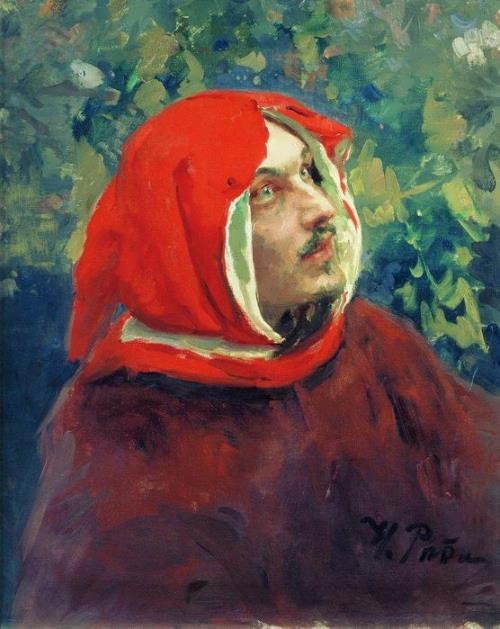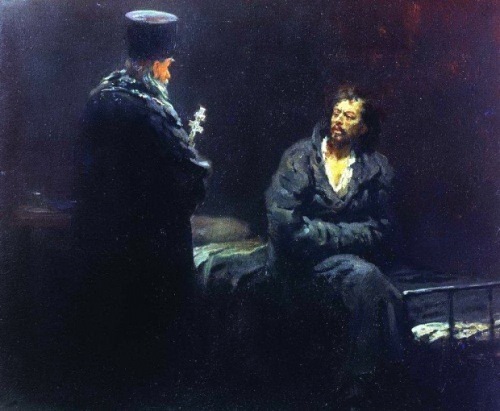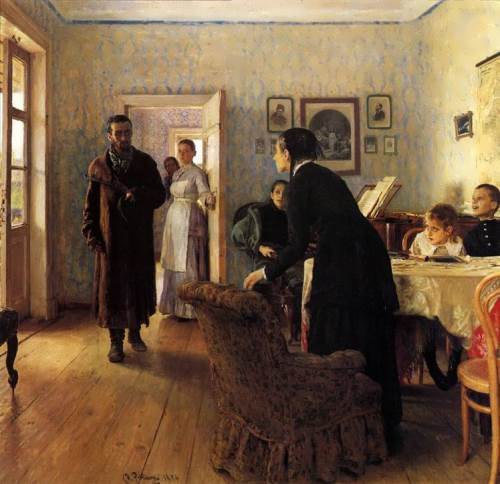Ilya Repin – Russian painter
The work of the Russian artist Ilya Repin is on a special place in Russia and abroad. His pictures are the brightest phenomenon in the world culture, after all the creator of the picture Barge Haulers on the Volga was perhaps the first to feel the approach of the revolution, to anticipate moods in society and to depict the heroism of the participants of the protest movement.
History, religion, social injustice, the beauty of man and nature – Repin embraced all the topics and realized his artistic gift. The fruitfulness of the painter is amazing: Ilya Yefimovich presented the world with hundreds of paintings in the genre of realism. He did not give up painting even in old age, before his death, when his hands did not obey the master.
Ilya was born on July 24 (August 5) 1844 in Chuguyev into a family of a military villager. His mother Tatyana Bocharova was an educated woman, who organized a school for the peasant children. She read aloud poems of Alexander Pushkin and Mikhail Lermontov.
You know, in the youth he worked as an icon painter. The boy studied at the Drawing School under the direction of Ivan Kramskoy, continued his studies at the St. Petersburg Academy of Arts.
In 1868, the student was creating sketches on the banks of the Neva and saw barge haulers. Later, in the summer of 1870, the painter had the opportunity to visit the Volga and to observe the work of barge haulers again. The picture Barge Haulers on the Volga made a sensation in Russia and Europe. German art historian Norbert Wolf made a parallel between Repin’s painting and the procession of the damned from Dante’s Divine Comedy.
The glory of the talented painter from St. Petersburg reached Moscow. Entrepreneur Alexander Porohovshchikov (the ancestor of the famous Russian actor) ordered a picture for the restaurant Slavianski Bazaar. The artist began working and in the summer of 1872 he presented a picture, that received praise and compliments.
The next spring the artist went on a trip to Europe, visited Austria, Italy and France. In Paris he met with the Impressionists, the work of Edward Manet inspired the creation of the canvas Paris Cafe. But the culture and manner of fashion Impressionism irritated the Russian realist.
In the mid-1870s, for the painting Sadko, the painter was awarded the title of academician.
Returning home from Europe, Repin spent 11 months in his native Chuguyev.
In 1878, the artist became a member of the Association of Traveling Art Exhibitions, academician of the Imperial Academy of Arts. From the very beginning of his career, from 1870s, Repin became one of the key figures of Russian realism.
The artist repeatedly painted pictures on biblical themes, for example, Golgotha, The Temptation of Christ and The Last Supper.
In 1885, the master presented the fans with a new masterpiece – Ivan the Terrible and his son Ivan on November 16, 1581. The plot of Repin’s painting was inspired by the music of Nikolai Rimsky-Korsakov.
The picture was shown at the exhibition of the Wanderers, but Alexander III did not like the plot. The tsar ordered not to show the work on the exhibition, but dozens of eminent people were against such a ban.
The picture They Did Not Expect Him was presented by the master in 1888, and it was immediately recognized as another masterpiece. The artist skillfully painted the psychological portraits of the characters. The face of the protagonist Repin changed repeatedly, even when the picture was in the gallery of Pavel Tretyakov. Repin secretly made his way to the hall and painted the face of an unexpected guest, until he achieved the desired expression.
In the summer of 1880 the painter along with his pupil Valentin Serov went to Little Russia. He painted everything: huts, people, clothes, household utensils. Repin was surprisingly close to the local cheerful people.
A special place in the artist’s heritage is occupied by royal orders. The first one was in the mid-1880s. Alexander III wished to see the reception of township foremen on the canvas. The painting Solemn Meeting of the State Council on May 7, 1901 was painted in 1903. Also he painted famous Portrait of Nicholas II.
At the end of the days the master worked in Kuokkala. In Finland, the elderly master was visited by colleagues from the Soviet Union, persuading him to move to Russia. But Repin never returned.
In 1918, Ilya painted the picture Bolsheviks, but the plot was called anti-Soviet. For some time, it was kept by an American collector, then Galina Vishnevskaya and Mstislav Rostropovich became the owners of the picture. In the 2000s, the owners decided to sell a collection at the London auction Sotheby’s.
To prevent the fragmentation of the collection, Russian businessman Alisher Usmanov bought all 22 pictures, including Bolsheviks. The collection is exhibited in the city on the Neva.
Personal life
In 1872 Ilya Yefimovich married Vera Alexeevna. They were together for 15 years. Vera gave birth to four children. They divorced in 1887.
Natalia Nordman became the second wife of the artist. She wrote under the pseudonym Severova. The second marriage ended dramatically. Natalia fell ill with tuberculosis and went to a foreign hospital. She died in June 1914 in Locarno.
The artist died on September 29, 1930 in Kuokkala, where he spent the last three decades of his life.
Ilya Repin – Russian painter
Ilya Repin – Russian painter
Ilya Repin – Russian painter



























